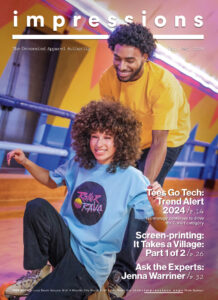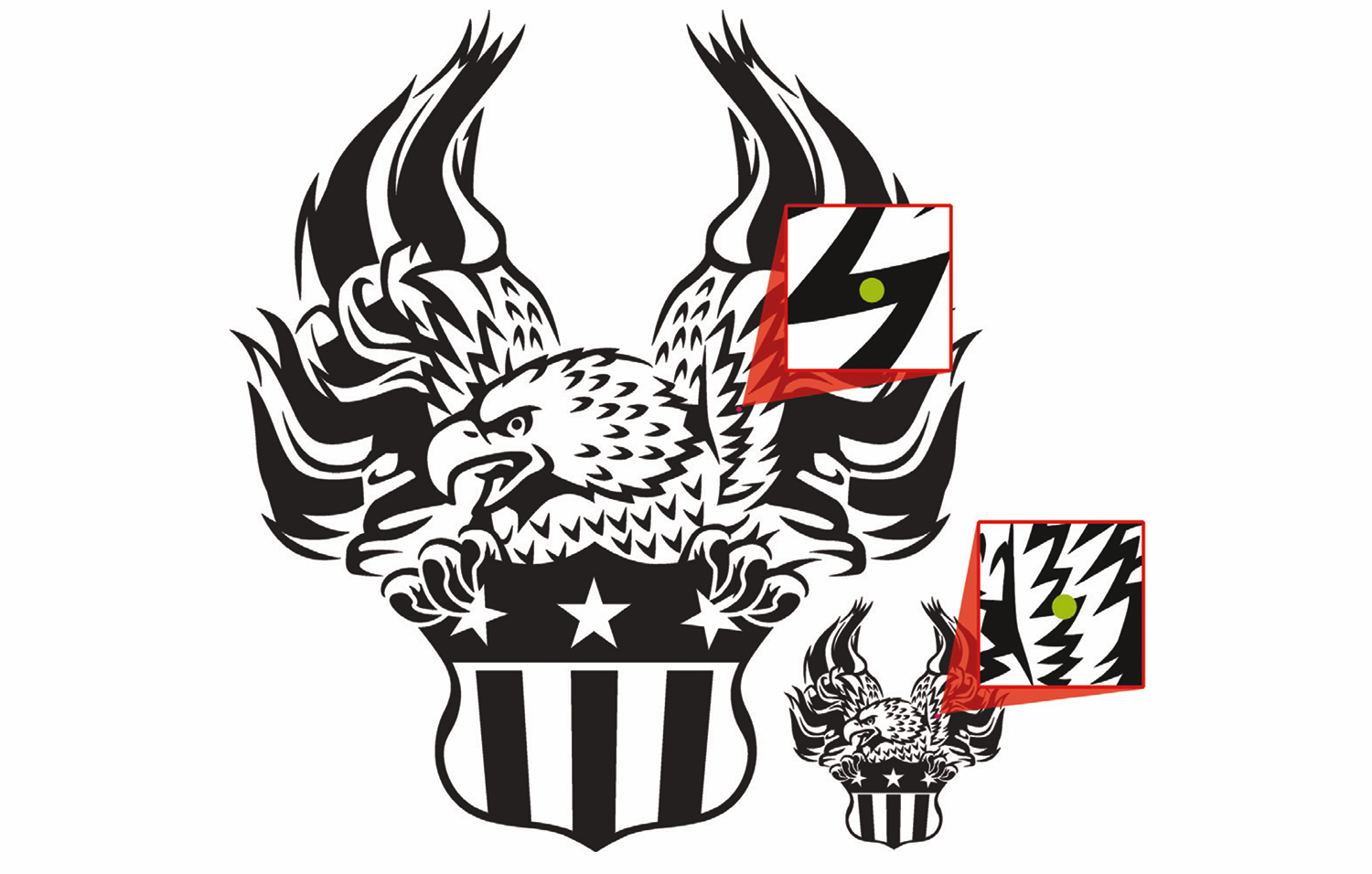No products in the cart.

All Together Now!
Source: https://impressionsmagazine.com/
So, your customer returned again this year asking you to reprint their usual spirit-wear design for the upcoming football game. That’s great. But why stop there? Think of all the potential that exists for increasing your sales by taking that one design and using it to create an entire collection. The idea here is to take the initial image you’ve been working with and either resizing or odifying it to create any number of other layouts and products. Now you have a whole host of additional options to present to your customers in a bid to further increase both profits and sales. What follows are a few things to consider when trying to flesh out a new collection.
Go Beyond Apparel
The most obvious way to create a collection is by taking an existing design and simply printing it on any number of different products. Let’s say there’s a new restaurant in your area, and they come to you asking for some T-shirts. Why not create some additional samples of the same design on other products as well—aprons, bandanas, napkins, hand towels, caps, you name it. What about hard goods? Think things like mugs, water bottles and cutting boards. Imagine all the things that can be used in a restaurant, either for decoration or by the staff as they’re going through their daily routine. Imagine as well all the items that can be sold to the restaurant’s customers.
Don’t have the necessary equipment to provide certain decoration methods on certain products in-house? No problem. Contract it out. Look for one of the many wholesale printing companies online or any companies you may know of in your immediate area that can do the work for you. Maybe try and find someone who doesn’t do the same kind of decorating as you and work out an arrangement between the two of you to provide complementary services for one another on similar jobs in the future.
Taking a single image or logo and then modifying it for placement on a variety of products is a great way to increase sales.
Image by Dane Clement
Size and Placement
When printing on different products, size and placement will naturally come into play. A full-front design that’s printed on a T-shirt, for example, will obviously need to be reduced to fit on a mug. Something to keep in mind: if you know you are going to be creating a layout that will be used as part of a wider collection, be sure and create it for the largest piece first. Also bear in mind that while size doesn’t really matter for a vector image because it can be resized without affecting quality, that’s not necessarily the case for a raster or bitmap image. It’s always better to start a raster image at the largest size needed, as opposed to enlarging it later. Otherwise, quality will deteriorate.
Along these same lines, there are a few other things you need to consider when
resizing artwork for different decoration methods. If you are creating a vinyl cut image, for example, creating a large vector image and then simply reducing it may not work. Lines and cavities may become too thin to cut and weed correctly. A full back screen-printed image reduced to a left chest may also run into these kinds of issues. Lines or text, in particular, may become too thin or too small to hold on screen. Small details may bleed together and lose their sharpness.
Again, it’s important to always think ahead and organize the creation process for a design according to what you will be printing and how you will be printing it. Central to this approach is remembering that to get the best results for a variety of different products or decoration methods, adjustments or modifications may need to be made between the larger and smaller layouts.
As you are doing so, when picking out your product offerings and figuring out the size and placement, don’t be afraid to think outside the box. I remember the first time I saw a North Face fleece jacket with a leftchest sized logo on the back, placed on the upper right side. I thought to myself, “That’s different!” Same thing when I first saw a line of type going across the back of a pair of shorts or sweatpants.
While these two examples might seem commonplace now, they show how placement can make a difference. Unique placement catches your attention. Think about the big sportswear companies and how they will place a tiny logo at the bottom of a long sleeve or above the cuff, or how they will include a small tag on the back of a shirt. While you might not take a full-blown illustration and reduce it to a size that is small enough for these kinds of applications, the approach many larger companies take illustrates the potential in terms of the different placement options available. Don’t be afraid to try something new!
This collection was created for a restaurant. Note how it includes products for sale to customers as well as for use by the staff .
Image by Dane Clement
Changing the Layout
Using the same layout and changing the size and placement for the different products making up a collection is all well and good. But to create a truly eye-popping collection of product offerings you may need to take things a step further by pulling some of the elements from an original image and then manipulating them to create a number of similar, but different layouts.
As an example, try changing the text of an original layout or dramatically rearrange your existing elements. As long as you use the same elements and fonts, the collection will retain a sense of sense of cohesion, which is key. Adjusting the layout this way will also allow you to use the design on other products that the original layout might not work on,due to their having a completely different set of dimensions. A full-size T-shirt layout reduced to fit on a pant leg, for example, doesn’t really work. Run some type vertically along with an element or two from the original layout, though, and you’ve got an all-new product offering to add to your collection that you might not have ever thought of using before.
For a vinyl-cut application, be sure the lines and cavities don’t become too fin or narrow to effectively cut or weed.
Image by Dane Clement
Go with Vector and Raster
Try employing both vector and raster images when creating your designs in order to maximize your options. Some production methods can only be done with vector artwork. Others require raster images. For example, you can try creating a simplified, vinyl-cut vector version of a full-color raster image for some unique garment ideas and then use this same image for some laser-cut products in leather or wood. Don’t miss out on all the product opportunities available by limiting yourself to just vector or raster art.
As mentioned at the beginning of this article, restaurants are a great example of the type of business you can create a collection for, and other possibilities abound. Think spirit wear for schools and sporting groups or local attractions, like zoos or aquariums. And don’t just stick with businesses. Events like bridal showers, bachelorette parties and birthday parties offer a wealth of opportunities. Same thing with holidays like Halloween, Easter, the Fourth of July and Christmas.
With the variety of products, production methods and markets available, the opportunities for creating a design collection are endless. Don’t be content with a single T-shirt design! Let your imagination run wild! Expand both your horizons and your bank account with all kinds of extra cash from the many additional items you can create and offer your customers.





Leave a Reply
You must be logged in to post a comment.